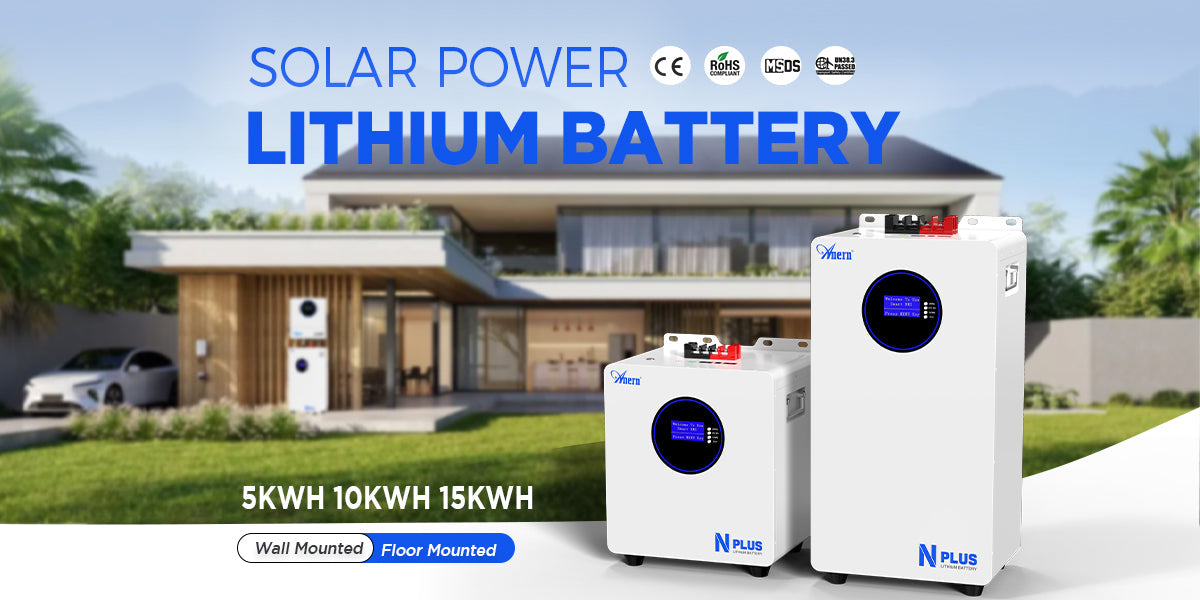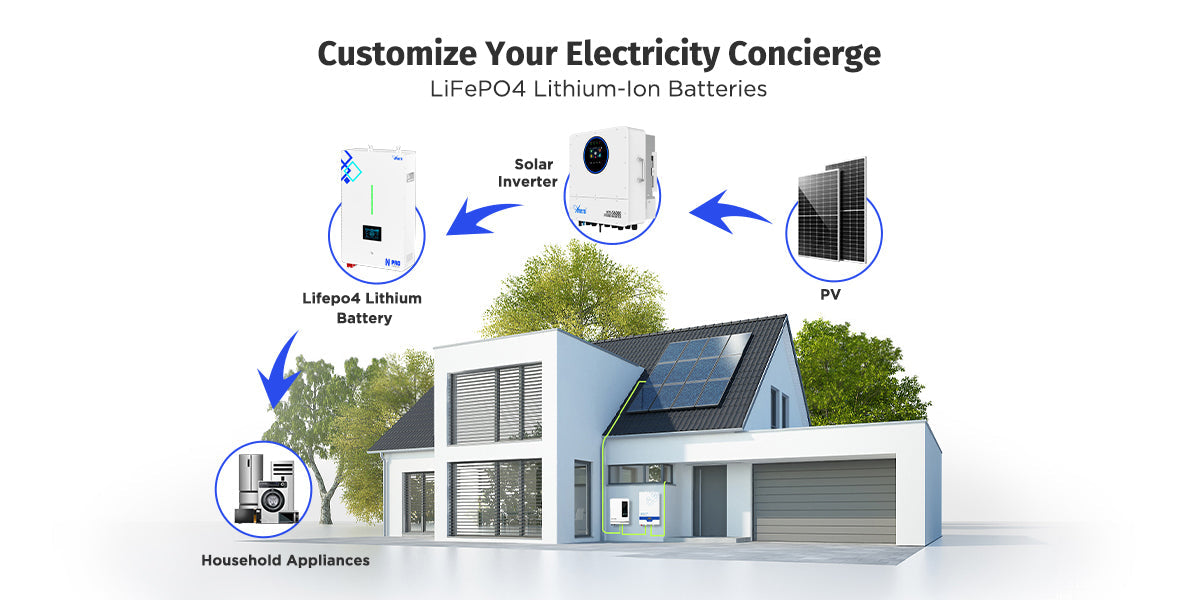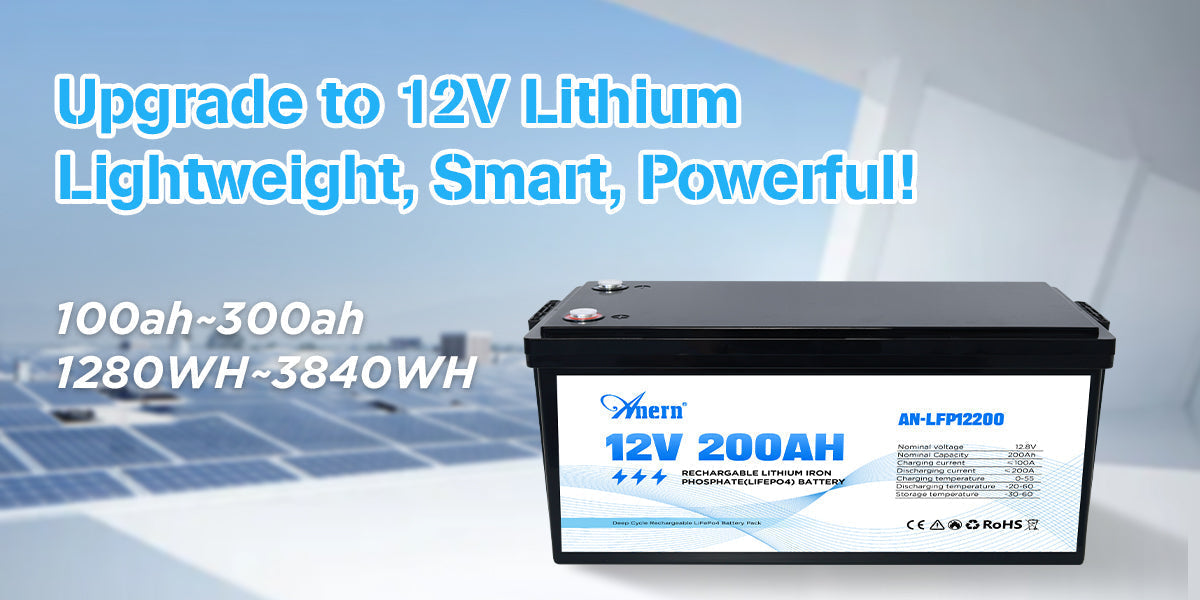Outages break routines fast. Food warms, work pauses, and stress climbs. A clear plan restores control. This article walks you through a home backup power system built around a lithium battery. You will define essential loads, size the bank, wire and protect the path, choose the right electronics, add solar if you need longer autonomy, and test. The aim is simple comfort for 24 to 48 hours with quiet, steady power.
What Should a Home Backup Power System Keep Running First?
Good backup starts with priorities. Keep the family safe, connected, and calm. Move only the must-have circuits to an essential loads sub-panel so switching stays clean and quick.
Begin with daily life items. Keep the refrigerator cold so food lasts. Keep the Wi-Fi up for news and calls. Light a few rooms. Charge phones and a laptop. Add a medical or work device if it truly matters. Skip heavy heat loads for short events. Electric ovens, dryers, and big AC units drain any lithium battery bank fast and bring little comfort in a brief outage. This focus makes a lithium battery backup for the home practical and affordable.
To estimate energy, list each item, its watts, and the hours you plan to run it. Multiply to get watt-hours and convert to kWh. Plan for 24 to 48 hours of autonomy. This list becomes the foundation of your home backup power system and guides all later choices.
How to Size a Lithium Battery Backup for Home Precisely
Sizing gets simple with a short flow. Start from real loads, apply one formula, confirm inverter power, then sanity-check wiring and headroom. Follow the steps below to set a dependable lithium battery plan for your home backup power system.
- Add up daily use. List each device, note watts and hours, then sum kWh. Example: fridge 120 W × 10 h = 1.2 kWh; router 15 W × 24 h = 0.36 kWh; lights 60 W × 6 h = 0.36 kWh; phones/laptop ≈ 0.12 kWh. Total ≈ 2.04 kWh/day for your home backup power system.
- Set autonomy and usable DoD, then calculate. Capacity (kWh) = Daily kWh × Days ÷ DoD. With 2 days and DoD 0.8: 2.04 × 2 ÷ 0.8 ≈ 5.1 kWh. Round to 5 to 6 kWh for a lithium battery backup for the home.
- Match inverter power. Continuous rating must cover your simultaneous loads. Allow motor starts with 2 to 3× surge. A 1500 W peak calls for 2000 to 3000 W continuous. This keeps the emergency power for the home stable when compressors start.
- Run sanity checks. Choose 48 V if power is high or cables are long; aim for a DC voltage drop under 3%; keep battery leads short and thick; leave 20 to 30% headroom so the lithium battery bank can grow.
Which Wiring and Protection Make Emergency Power for Home Safe?
Families rest easier when the power path is simple and protected. Picture a short, well-lit hallway. A lithium battery bank feeds DC protection, then the inverter or inverter-charger, then a transfer switch, and finally the essential sub-panel. Each hop has a clear job. Each deserves the right safeguard so the home backup power system behaves the same way every time.
What to install:
- DC fuse or breaker at about 1.25 times the expected continuous current
- AC breakers that match local code
- An AC surge protection device to absorb spikes
- Solid equipment grounding and bonding
- Equal-length battery cables on parallel strings for fair current sharing
Keep the battery leads short and thick so the inverter holds start-up surges without strain. Aim for a DC voltage drop under three percent on the main cables. Place the transfer switch where you can reach it fast. Label the switch and every breaker so anyone in the home can act confidently in the dark. These small touches turn emergency power for the home into a steady routine.
| Checkpoint | Practical target |
| Usable depth of discharge for a lithium battery | 70 to 90 percent |
| Transfer time for electronics | Under 20 ms |
| DC voltage drop on main leads | Under 3 percent |
| Spare capacity for growth | 20 to 30 percent |
| Charging ambient for LiFePO4 | Above freezing unless cells are heated |
Before you call it done, run three quick checks. Confirm there is no backfeed because all switching goes through the transfer switch. Confirm clean airflow around the inverter and the lithium battery bank. Confirm grounding and bonding with a simple continuity check.
How to Choose the Best Battery Backup for Power Outage Runtime and Surge
Choice decides comfort and noise during a blackout. Look first at the cells, then the inverter, and finish with growth and monitoring. Use the steps below to lock in a lithium battery backup for home that feels calm and dependable.
- Pick the right chemistry and protection. Choose LiFePO4 for long cycle life at common indoor temps. Plan on about 80% usable depth of discharge. Ask for a BMS with a low temperature charge cut-off or cell heating. This keeps the lithium battery healthy through winter.
- Match inverter power to real loads. Continuous rating must cover your simultaneous watts. Surge should start motors at two to three times the running power. If a 240 V circuit sits on the essential panel, use a split-phase output. Fast transfer under 20 ms keeps electronics from rebooting.
- Control standby use and refueling paths. Low idle draw preserves runtime at night. Support for grid charging, solar charging, and a generator input adds options in long storms. This blend delivers the best battery backup for power outages across seasons.
- Plan monitoring and future growth. A clear app or front panel that shows state of charge, alarms, temperature, and cycle count helps you act early. Pick a modular pack and an inverter that accepts more capacity. Leave 20 to 30 percent headroom so the home backup power system can grow without rewiring.

When to Add Solar to Your Home Backup Power System, and How Much PV Is Enough?
Solar refills the lithium battery by day so you start each night ready. Use a simple estimate. Daily solar kWh equals sun hours times array kW times system efficiency. Many homes see 0.75 to 0.85 for efficiency. If you use about 2 kWh each day and the site gets four sun hours, a 0.7 kW array at 0.8 efficiency makes roughly 2.24 kWh. That covers the example plan with a small cushion.
Connection is straightforward. A hybrid inverter with MPPT keeps hardware compact. A separate MPPT keeps the design modular. Cloudy weather lowers yield, so hold a small reserve in the lithium battery bank. A quiet generator can feed the inverter AC input during long storms where local rules allow. Solar plus a lithium battery gives the best battery backup for power outage when you expect multi-day events.
How to Install and Test a Lithium Battery Backup for Home
Commissioning feels easy with a short plan. Prepare the space, wire with protection, bring power up in stages, then practice a quick drill. This keeps your home backup power system predictable and your lithium battery healthy.
- Prepare the room and mount hardware. Choose a dry, ventilated space with service access. Mount the inverter and transfer switch on a firm surface. Place the lithium battery bank on a stable base. Bond and ground per code. Label every breaker and circuit so anyone can follow the layout.
- Wire DC and AC with protection. Route short, thick DC cables and add a fuse or breaker. Confirm polarity before closing protection. Connect the AC output to the transfer switch and the essential sub-panel. Verify there is no backfeed path. This keeps emergency power for the home safe.
- Power up in stages and observe. Check polarity and terminal torque. Start with no loads and confirm inverter status. Add loads at 10 percent, then 50 percent, then your full plan. Watch voltage sag and alarms during a fridge or pump start. Adjust cable size or settings if needed so the lithium battery backup for home runs calmly.
- Run a monthly drill and quick care. Simulate a grid outage for 15 to 30 minutes. Log transfer time and state-of-charge drop. Review alarms, tighten terminals, clean filters, and confirm airflow. This habit keeps the system ready for the next blackout.
A Blackout-Ready Home Backup Power System Delivers Calm, Quiet Power
A lithium battery home backup power system keeps lights, internet, and food safe throughout outages. List essential loads, size the bank with the simple formula, and wire a clean transfer switch for fast, safe changeover. Add a small solar array if long storms are common so the lithium battery backup for home refills each day. Start today: write your load list, measure one day of use, confirm capacity, and schedule a licensed electrician to install and test. This gives steady emergency power for home and feels like the best battery backup for a power outage when the grid goes dark.
FAQs
Q1. Where should a lithium battery bank be located within a residence?
Choose a well-ventilated, non-humid room that is easily accessible and comfortable. If it is practicable, place it out of the way of sleeping areas. Do not place it in a humid basement or a heated attic. Keep a clear space around the inverter and pack. Locate a smoke or heat alarm nearby. Place clear shut-off labels on the home backup power system.
Q2. Is a lithium battery backup for a home required for verification or authorization?
Call your local building department before you start. Some locations require an electrical permit and final inspection. If the inverter has the capacity to feed power back, your utility may require a simple connection notice. Install approved gear and use a licensed electrician. Clear signage notifies the inspector and makes emergency power safer for your residence.
Q3. Can a lithium battery power central air during a power outage?
Big compressors pull heavy surge. A soft start can assist, but there is always a need for a heavy split-phase inverter and a healthy reserve in the bank. A lot of households put one or two high-efficiency mini-splits on the necessary panel instead. That retains comfort while maintaining the best battery backup for power failure runtime.





Leave a comment
All comments are moderated before being published.
This site is protected by hCaptcha and the hCaptcha Privacy Policy and Terms of Service apply.